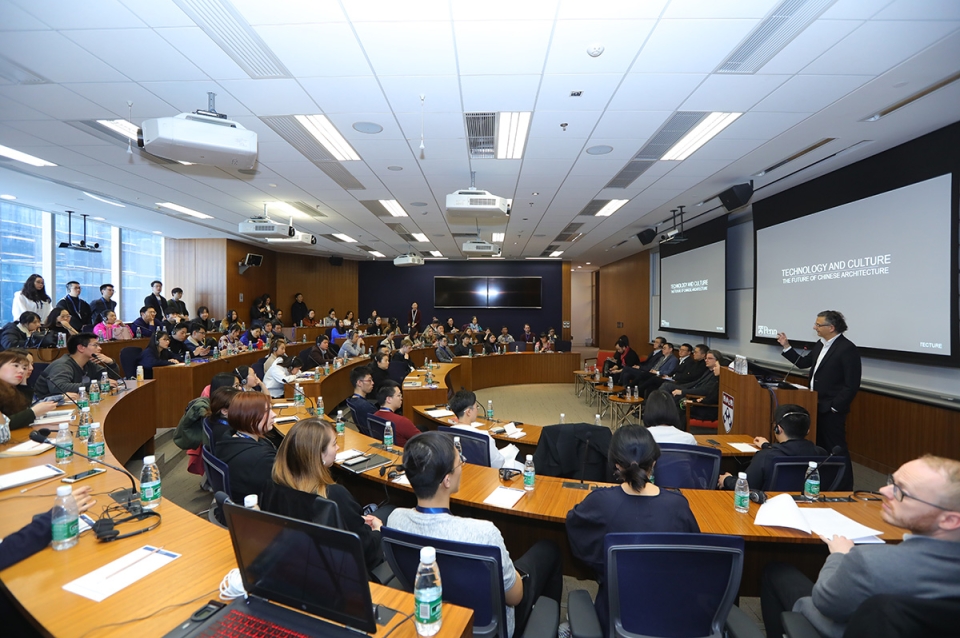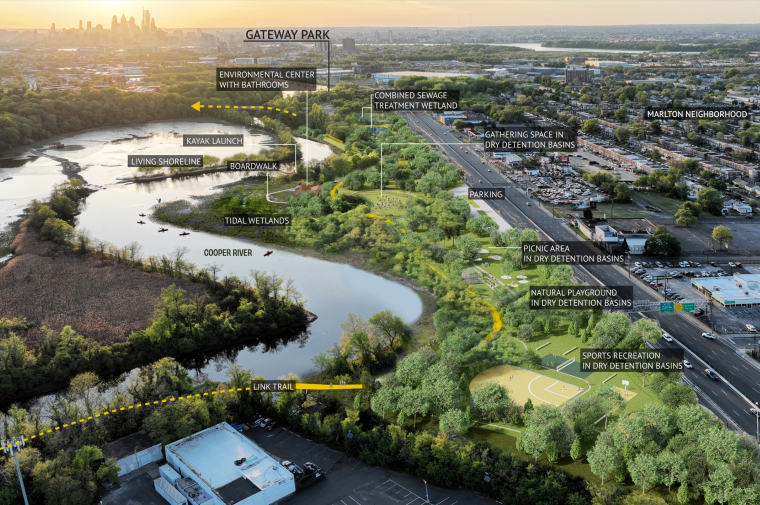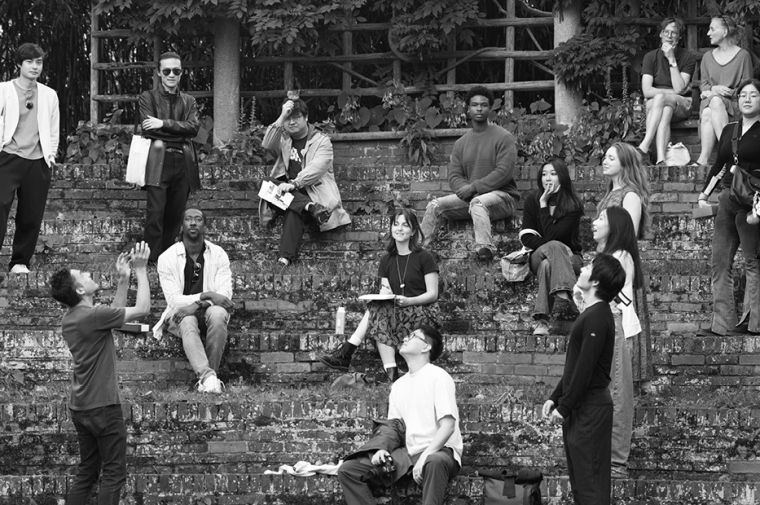April 12, 2019
Stuart Weitzman School of Design
102 Meyerson Hall
210 South 34th Street
Philadelphia, PA 19104
Get the latest Weitzman news in your Inbox
Media Contact
Michael Grant
mrgrant@design.upenn.edu
215.898.2539
Marilyn Jordan Taylor, professor of architecture and urban design and former dean, has been working in China for most of her career, long enough that she’d just as soon be vague about the exact number of years. Before she became dean of the University of Pennsylvania Stuart Weitzman School of Design in 2008, Taylor was a partner in Skidmore Owings & Merrill’s Urban Design & Planning practice, in which capacity she spent a fair amount of time overseas. Mostly, she took on the types of projects she now jokingly refers to as “horizontal work”—airports, subway systems, college campuses, and urban districts. She began going to Shanghai and Beijing in the early 1980s, in the very earliest stages of China’s ongoing phase of rampant economic development.
“I had a really remarkable experience of getting to know China, even just a little bit, over the three-plus decades that I have been going there,” Taylor says. “It is a place of extraordinary fascination to me, continuing to this very moment.”
At Penn, the fascination has only deepened as Taylor established the School’s research ties to China. In 2015, after a summit in Beijing focused on challenges in Chinese cities, Taylor, along with Meyerson Chair of Urbanism, Professor and Chair of Landscape Architecture Richard Weller and Professor of Architecture Ali Rahim, launched a two-year joint research initiative with Chinese scholars. She also helped secure a grant from AECOM to run a series of design studios focused on urbanization in China. And just last month, Taylor, Rahim, and Weller hosted a two-day event called the Penn-China Design Dialogues in Beijing, with three panels focused on urban design, architecture, and landscape architecture.
Taylor and Associate Professor of Landscape Architecture Chris Marcinkoski curated the first panel, a half-day discussion devoted to urban design. The panel was devoted to questions about society and technology, connectivity within and between cities, governance, and the scale of planning and development. All of these questions will have long-lasting implications for the health and quality of life of Chinese cities, Taylor says.
“Are the Chinese going to take on urbanization 100 hectares at a time? On a block-by-block basis? On a district basis?” Taylor says. “Because it is clear to everybody that size and speed and replication are what have led to some of the least effective new urban districts in places that have been created.”
The panel was intended to be “a shaping place” for an exhibition and series of public sessions that Taylor and Marcinkoski have planned for June as part of the AECOM grant, Taylor says. She and Marcinkoski selected prominent scholars and professionals to participate on the panel. And they also got recommendations from former students. Taylor noted that near the beginning of her tenure as dean, the Weitzman School, like other schools, began to get a lot of new applications from Chinese students. Many of those students have since returned to China, to work in architecture firms, at universities, and in planning positions. Their advice helped shape the panel, Taylor says.
“What we’re doing now is really building up Philadelphia-Chinese cities, a two-way conversation that is ultimately great for future students—Chinese and from all other parts of the world,” Taylor says.
For Ali Rahim, the Penn-China Design Dialogues was an opportunity to revisit questions that emerged from the first symposium on the future of architecture in China, which was held to mark the opening of the Penn China Wharton Center in 2015.
“We had a sense that new building technologies and the digital innovation in design processes had changed the way architecture is practiced around the world, but that this must be even more accelerated in a place like China where building and development has been happening at such a high rate for the last few decades,” Rahim says.
The architecture panel, held in the afternoon of the first day of the event, explored questions about how technology has transformed architecture in China, how it has given architects new capacities as designers and where they are still limited, and what promises of digital architecture remain unfulfilled, Rahim says. The panel was organized as a series of 10-minute presentations, each focused on a single building. Rahim says he wanted to gather the most influential architects and design educators in China, and that the diverse set of experiences, opinions, and scales of work created a rich discussion on the panel. Panelists included China-based architects, scholars from Tsinghua and Tongji universities, and the dean of the Chinese Academy of Fine Art.
“Without the hand of the designer, architects run the risk of taking a back seat role in building,” Rahim says. “As technology develops, we need to make sure that we are the ones that bring it to cultural relevance and show everyone how it can be used to create impact in our world, rather than becoming simple users of tools that are made for us.”
Participants on the architecture panel included Shao Weiping, chief architect, BIAD; Ma Yansong, director, MAD Architects; Schumacher, director, Zaha Hadid Architects, Beijing; Hannes Pfau, head, UN Studio Shanghai; Xu Weiguo, chair, Tsinghua University; Zhenyu, dean, Tongji University; Philip Yuan, chair, Tongji University; Zhu Pei, dean, CAFA; Na Wei, director, Elevation Workshop; Rosalynn Hu, director, Neri and Hu Architects; Li Xinggang, chief architect, CDARG; Yung Ho Chang, director, FCIZ Architects; and Wang Hui, director, Urbanus.
The urban design and architecture panels were each half-day events, hosted at the World Financial Center. The landscape architecture panel was held over a full day at the Chinese Academy of Fine Art. The panel was partly organized by Weitzman students Chendi Zhang and Eva Cai, both research assistants for Richard Weller. It was focused on the notion of “Beautiful China,” a vague declaration of intent by President Xi Jinping to create a clean and beautiful environment across the country. The ambiguity of the phrase makes it ripe for exploration, Cai and Zhang say.
“It’s more like a political concept,” says Cai. “It’s not like a real strategy.”
Cai and Zhang invited a range of panelists, split between mid-career professionals and prominent scholars of landscape architecture in China. The idea, says Weller, was to bring two generations of landscape architects together to work through the concept.
“Beautiful China is something of an enigma, because it’s official party policy to make China—not great again, but beautiful,” says Richard Weller. “[The panelists] are all trying to work out their own relationship to that question and their own practices in relation to that question. As a sort of cultural event, it was asking a couple different generations of landscape architects, ‘What do you think it means?’”
Participants in the landscape architecture panel included Rui Yang, chair, Department of Landscape Architecture, Tsinghua University; Kongjian Yu, professor, School of Architecture & Landscape Architecture, Beijing University; Yufan Zhu, vice-director, Department of Landscape Architecture, Tsinghua University; Yuning Chen, chair, Department of Landscape Architecture, Southeast University; Binyi Liu, professor, Department of Landscape Architecture, Tongji University; Hui Liu, professor, Department of Landscape, Xi’an University of Architecture & Technology; Xiangrong Wang, dean, School of Landscape Architecture, Beijing Forestry University; Feng Han, chair, Department of Landscape Architecture, Tongji University; Chundi Chen, associate research fellow, Chongqing Institute of Green and Intelligent Technology, Chinese Academy of Sciences; and Zheng Chen, associate professor, Department of Landscape Architecture, Tongji University. The event also included welcoming remarks from Dean Fritz Steiner and a gallery talk from Marcinkoski and Weller.
The panelists discussed the concept at various scales. One has drawn up an “ecological security plan” for the entire nation. Another was talking about creating landscapes at the scale of a single square meter. Weller is planning to produce a book this summer collecting contributions from each of the landscape architects who participated in the Penn-China Design Dialogues. He’s also commissioned a photographer to produce a photo essay documenting Chinese landscapes, from the mountains to the sea. The book, like the panel, will explore how the meaning of beauty, and the practice of landscape architecture, is changing in an urbanizing China.
“Landscape and aesthetics and fine art in China are kind of all bundled together with the spirituality of mountains and water,” Weller says. “So beauty still tends to be something that's out there. Americans, we kind of do it, too. We think beauty is in Yosemite. Natural beauty, you’ll really see it in Yosemite—you won’t see it on the streets of Philadelphia. So Chinese urbanization and the relationship to landscape is a bit split like that, too. And I think most of the scholars that were there see well beyond that.”


 Expand Image
Expand Image



